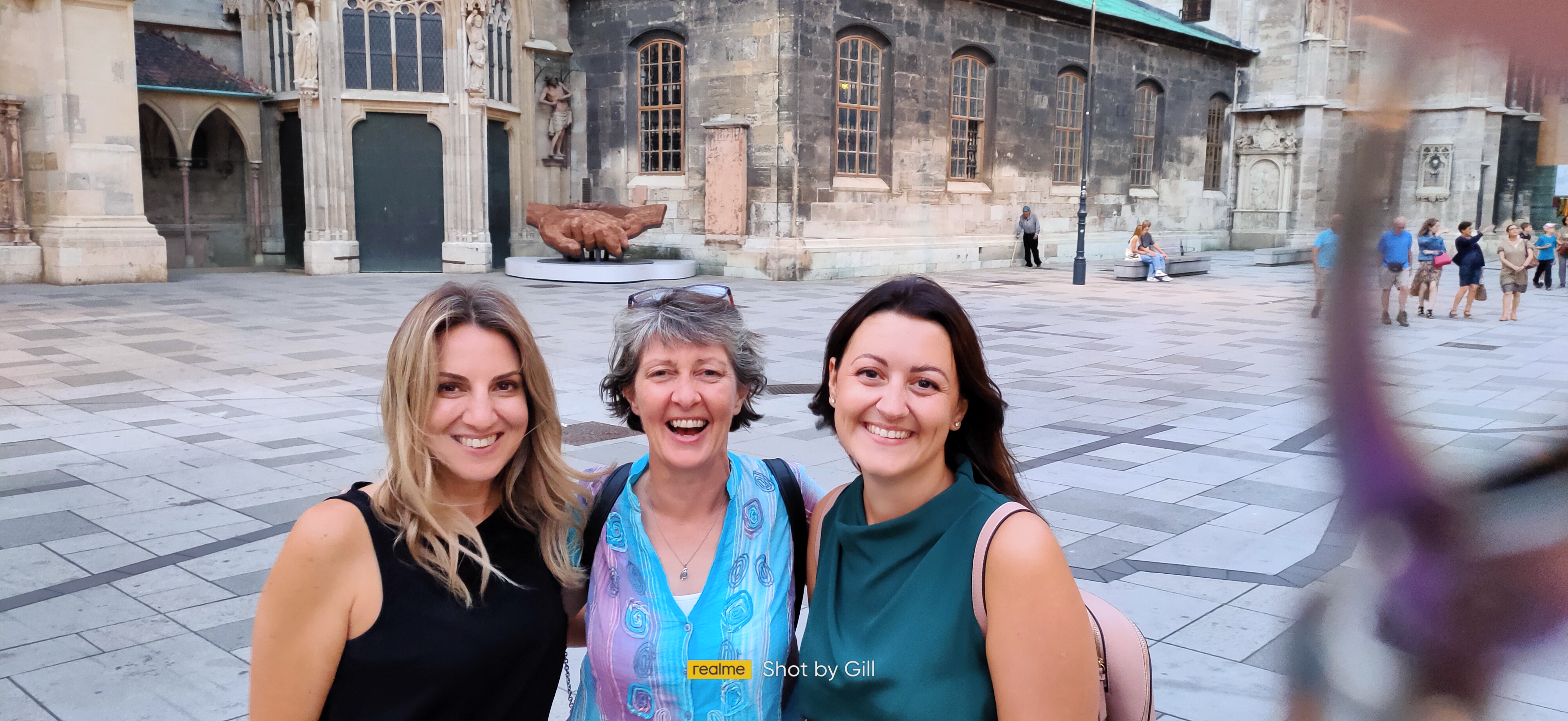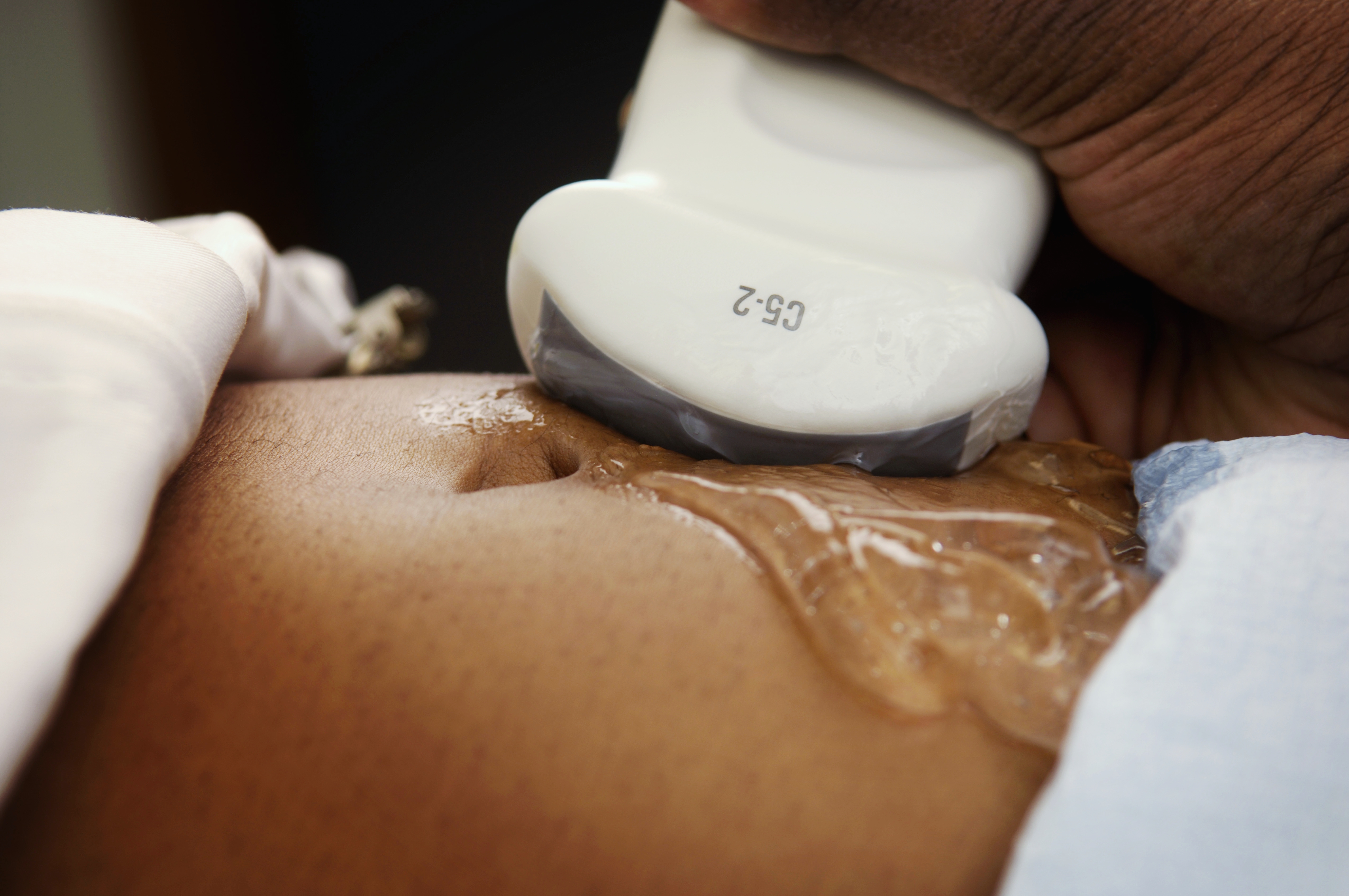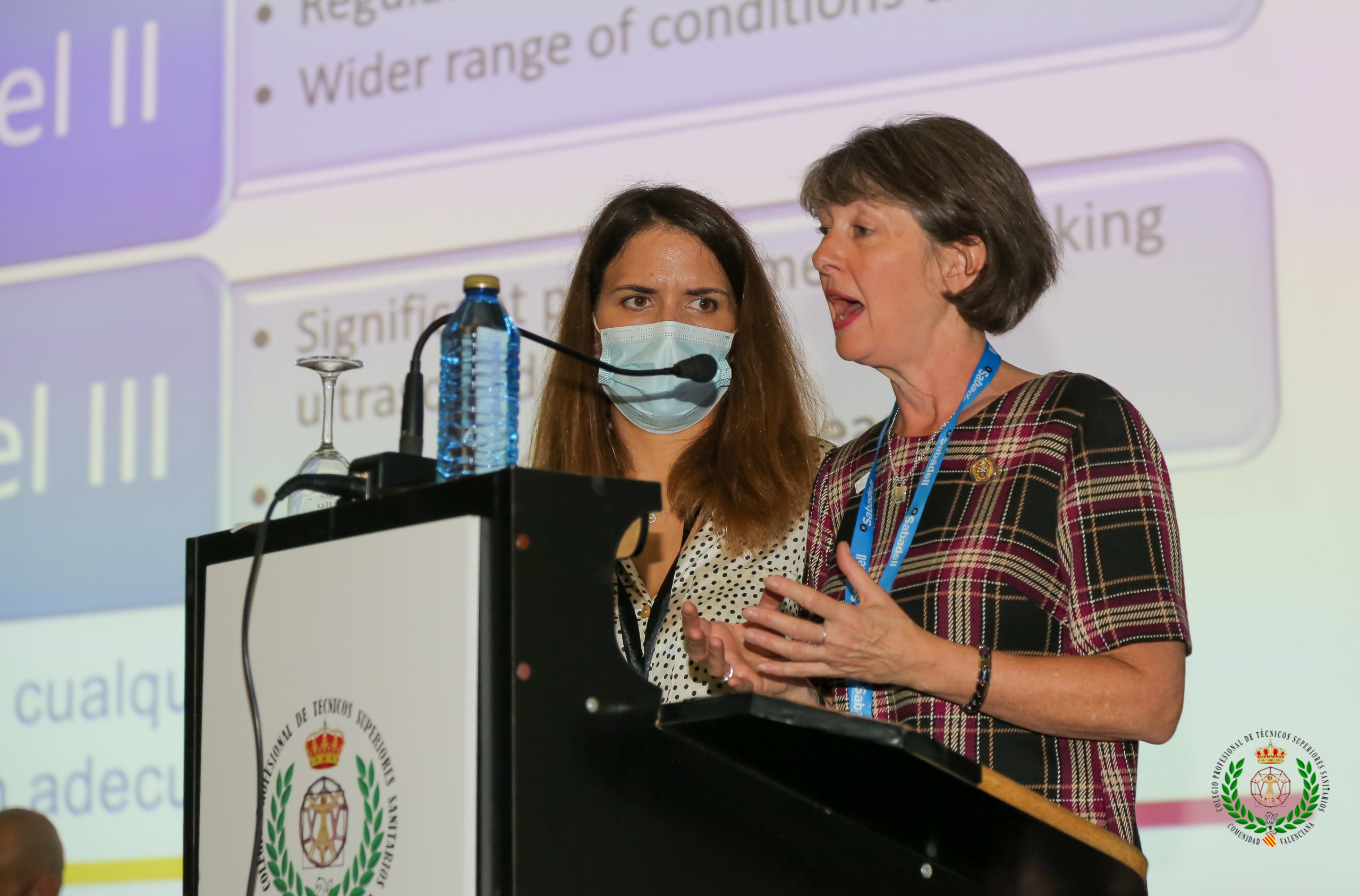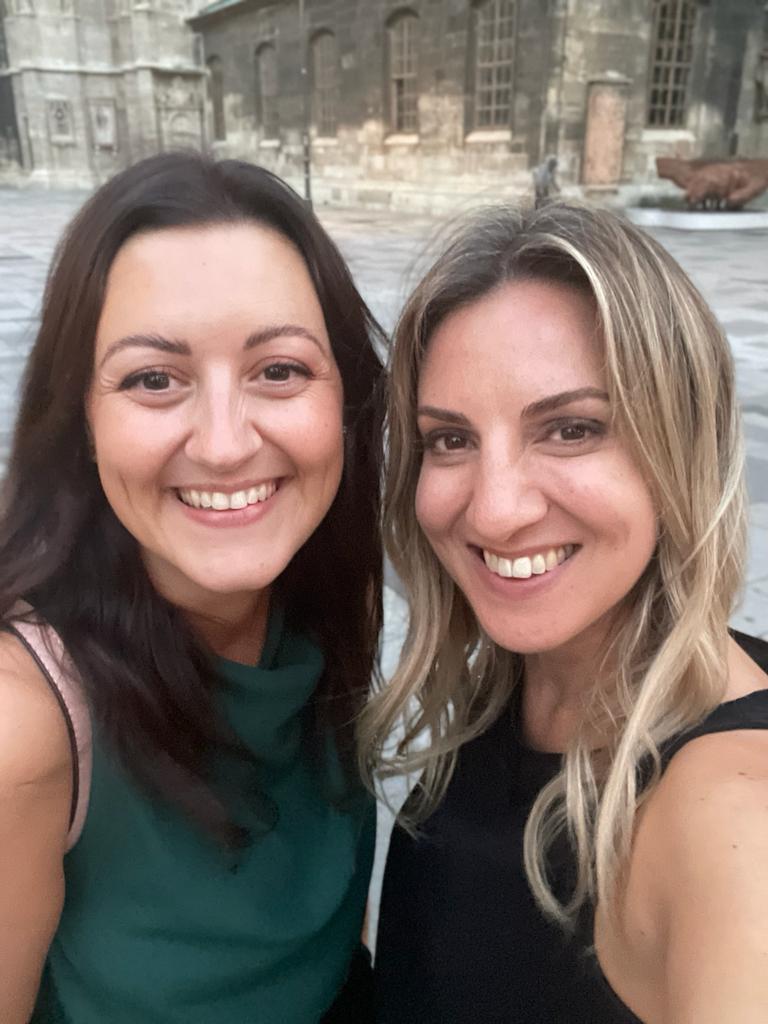October seems to come around increasingly quickly every year. It is now five years since we started to celebrate Medical Ultrasound Awareness Month (#MUAM) and so much has happened in that time.
After more than two years of the pandemic, members of the sonography workforce, along with other healthcare professionals, are exhausted.
Despite this, much progress has been made in ultrasound over the past year and the role of the sonographer in the UK is well respected by radiographers in Europe and further afield.
ECR 2022
Live demonstrations at the European Congress of Radiology (ECR) in Vienna in July by UK sonographers Roxanne Sicklen and Ruth Reeve were highly valued by the radiologists and radiographers who attended (report to be published later this week).
Many interesting discussions took place following the demonstrations about person-centred care, speed and quality of ultrasound examinations and training requirements for safe ultrasound provision.
This new introduction to the conference was a great opportunity for sonographers to demonstrate their clinical skills and knowledge. The confidence demonstrated by all sonographers when responding to technical and clinical questions from the audience reinforced the message that sonographers in the UK are not just acquiring images, they are offering high-quality interpretative reports and managing patients’ onward referrals where necessary.

Image: Gill (centre) with Roxanne Sicklen (left) and Ruth Reeve (right) at the ECR in Vienna
Identity and regulation
A year ago, for the Med Rad Journal Club (#MedRadJClub) on Twitter, a number of sonographers wrote blogs about the professional identity of sonographers to stimulate discussion during a Tweetchat.
When I reflected on my own blog, it again reminded me how much progress has been made in the UK in relation to the sonographer workforce, something of which sonographers should be extremely proud.
Unfortunately, we still have not been able to progress sonographer regulation. This is despite the best collective efforts of many organisations in highlighting case studies where risk is evident and providing alternative options in a letter to the health and social care secretary in November 2021. The response from junior health minister Edward Argar was disappointing but not surprising, given that physician associate regulation has been delayed until next summer at least.
Ultrasound academies
But it’s not all doom and gloom. Much progress has been made in England to use funding from Health Education England (HEE) to develop and roll out ultrasound academies, which are to be integrated into the leadership of the regional imaging academies.
Some of the devolved nations are also looking at placement capacity expansion initiatives and ideas to improve sonographer recruitment and retention. In time, the academies should assist by taking some of the pressure off clinical departments, particularly in the early stages of training.
We are already hearing of innovations being developed to increase clinical capacity to help to ease pressures on the workforce.
Everyone has a role to play in supporting the next generation of sonographers but also in supporting existing sonographers to develop their skills and competencies to provide extended services and input into research, leadership and education, should they choose to.
Apprenticeships for advanced clinical practice can be used to support this development and the newly published preceptorship and capability development framework for sonographers, funded by HEE, provides guidance on supporting not only newly qualified staff transition into their roles but staff wanting to progress along the career framework for sonography.
Sonographer research is becoming more prominent, as evidenced by the three speakers at the UKIO 2022 conference session entitled Getting into Research, all of whom were sonographers. Two of them (Emily Skelton and Catriona Hynes) are on the SoR Ultrasound Advisory Group (UAG) and one (Jackie Matthew) is on the SoR Research Advisory Group.
Behind the scenes
The SoR and the UAG have been working hard behind the scenes this year, updating relevant guidance documents and developing new documentation. Working with the British Medical Ultrasound Society (BMUS), a major update was made to the SoR and BMUS guidelines for professional ultrasound practice, which we hope has been valuable to the ultrasound community.
The Society has published a number of other documents, which can be found on the SoR website’s policy and guidance document library.
One important document, Recording Images of Sonographers Performing NHS Obstetric Ultrasound Examinations: Guidance to Support Local Policy Development, was co-developed with external stakeholders, including the charity Antenatal Results and Choices (ARC), in response to feedback from sonographer members.
Partnership and co-development of documents to include a wider range of opinions and ensure representation from stakeholders, including patients/parents, has been a theme this year and further documents will be released over the autumn and winter to help support local policy and practice.
Difficult reading
This year has also seen the publication of the Ockenden report on maternity care, which makes extremely difficult reading.
At the time of writing, we are awaiting the outcome of the Kirkup review into the East Kent maternity services and Donna Ockenden is starting an independent review of maternity services at the Nottingham University Hospitals NHS Trust.
The SoR is committed to collaborating with other professional bodies to ensure that the sonographer voice is heard when discussing improvements in maternity care and working practices. Initial meetings are taking place to work with parent representatives and professional bodies to help deliver on the actions from the Ockenden report.
Sonographers are crucial members of the antenatal team and the SoR is looking at ways to help departments to embed this across services to improve outcomes for parents, while also enhancing working conditions and career progression opportunities for obstetric sonographers.
Celebrate and inform
So, once again, we hope you can all celebrate the tremendous work undertaken by highly skilled sonographers. Please let people know your job title to increase understanding among patients and other healthcare professionals. Let them know more about your role and what your responsibilities, skills and training involve.
This month is the time to share your knowledge and skills on social media, on conference calls and face to face to celebrate this amazing career and your expertise.
Related News
_3.jpg?width=5100&height=3388&ext=.jpg&width=1200&resizemode=force) CPD
CPDAvoiding work-related musculoskeletal disorders
Gill Harrison, professional officer for ultrasound, offers advice for sonographers
 People
PeopleCrossing borders
Gill Harrison, the SoR's professional officer for ultrasound, reports from the first ultra...
 Ultrasound
UltrasoundA MUAM Halloween poem from the animal which inspired medical ultrasound
.jpg?width=5100&height=3388&ext=.jpg&width=1200&resizemode=force) Ultrasound
UltrasoundEditing an ultrasound textbook
As we continue our celebration of Medical Ultrasound Awareness Month, Nicki Davidson descr...
 Ultrasound
UltrasoundViennese whirl
Two UK sonographers enlightened delegates to the European Congress of Radiology in Vienna ...
